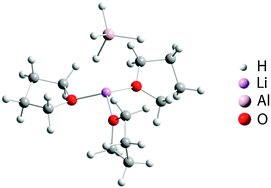Investigation of LiAlH4–THF formation by direct hydrogenation of catalyzed Al and LiH
Abstract
The formation of LiAlH4–THF by direct

* Corresponding authors
a Brookhaven National Laboratory, Upton
b University of Texas at Dallas, Richardson
The formation of LiAlH4–THF by direct

 Please wait while we load your content...
Something went wrong. Try again?
Please wait while we load your content...
Something went wrong. Try again?
D. Lacina, L. Yang, I. Chopra, J. Muckerman, Y. Chabal and J. Graetz, Phys. Chem. Chem. Phys., 2012, 14, 6569 DOI: 10.1039/C2CP40493A
To request permission to reproduce material from this article, please go to the Copyright Clearance Center request page.
If you are an author contributing to an RSC publication, you do not need to request permission provided correct acknowledgement is given.
If you are the author of this article, you do not need to request permission to reproduce figures and diagrams provided correct acknowledgement is given. If you want to reproduce the whole article in a third-party publication (excluding your thesis/dissertation for which permission is not required) please go to the Copyright Clearance Center request page.
Read more about how to correctly acknowledge RSC content.
 Fetching data from CrossRef.
Fetching data from CrossRef.
This may take some time to load.
Loading related content
